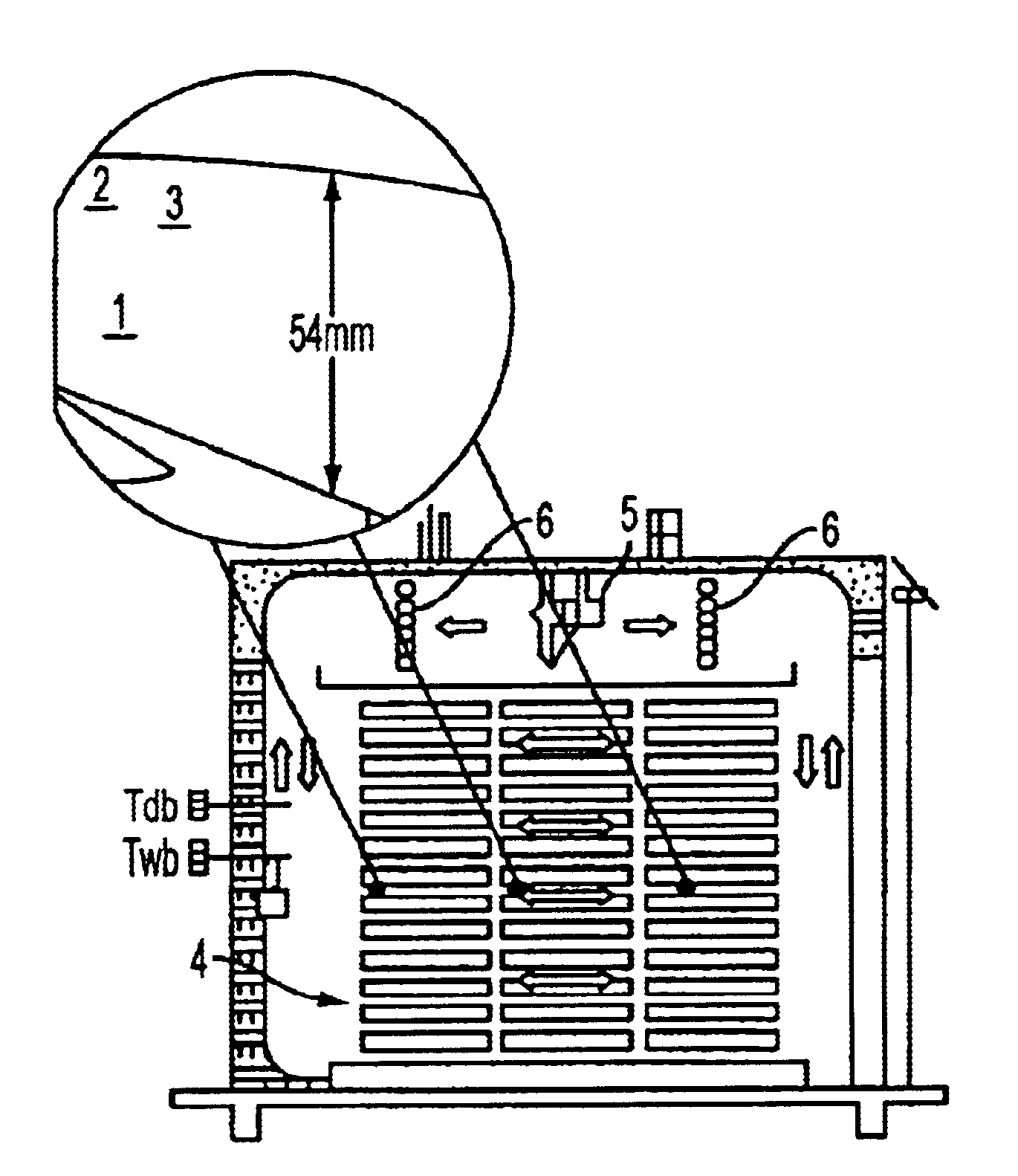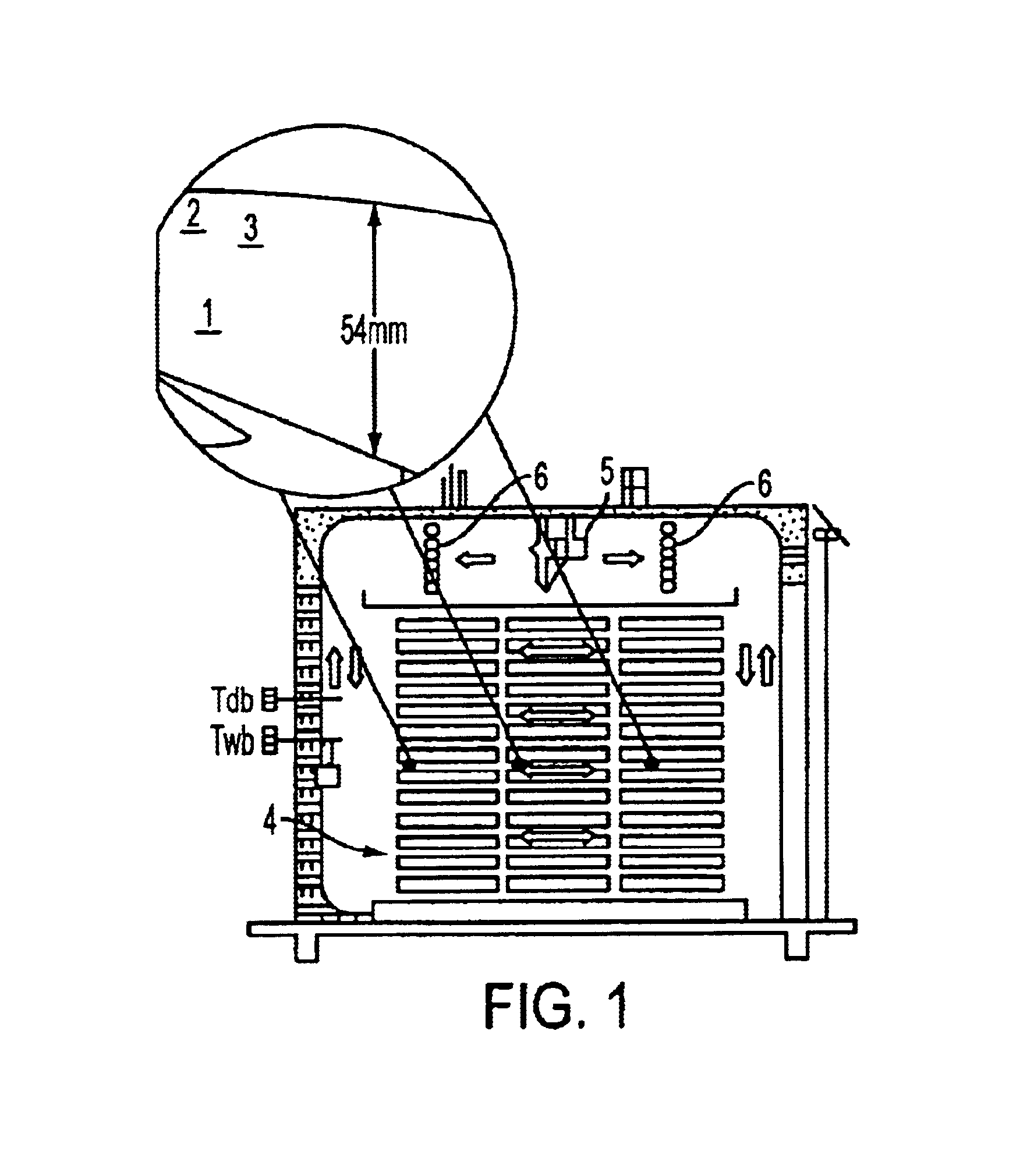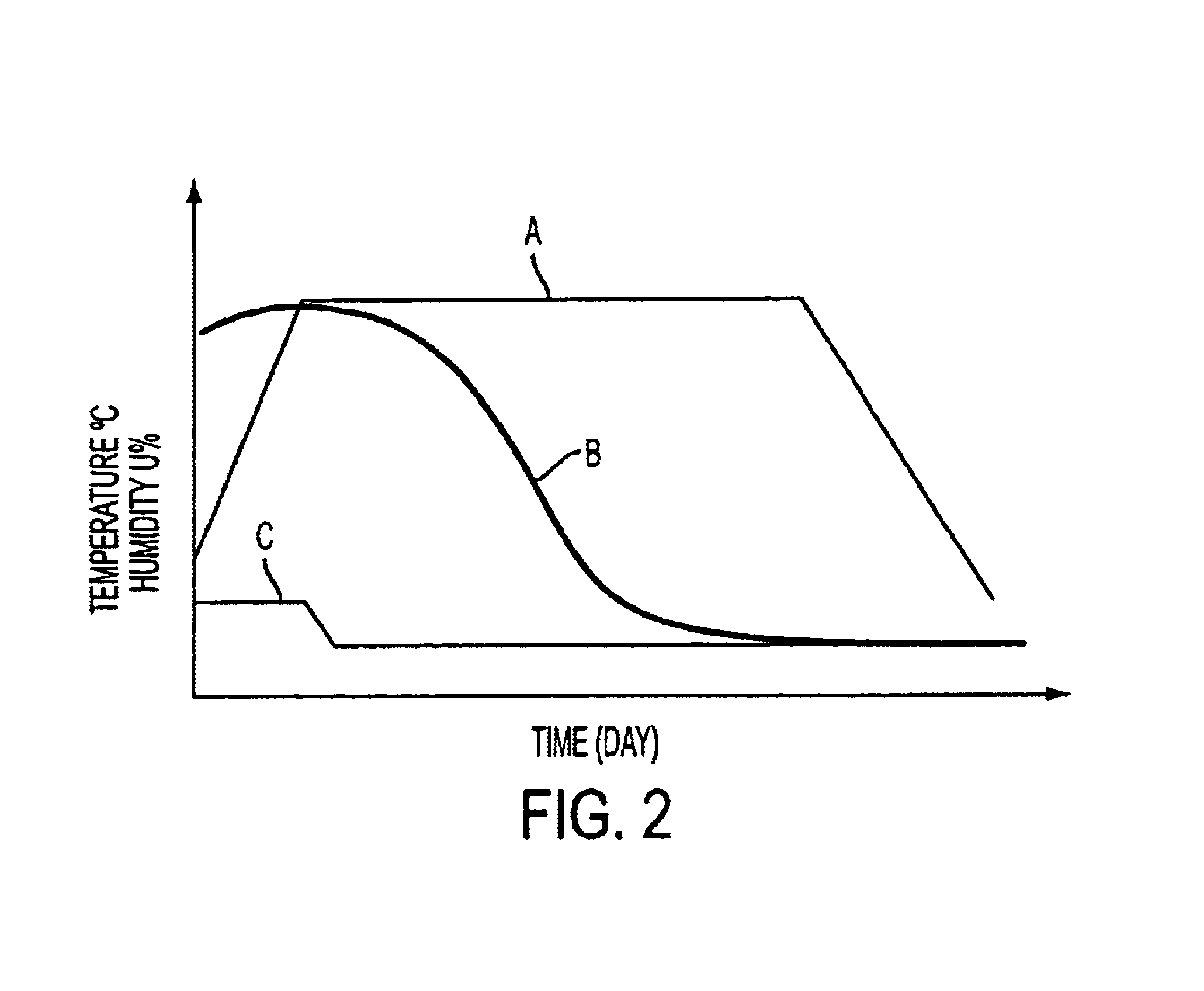Wood accelerating drying process based on its rheological properties
a drying process and rheological technology, applied in the direction of instruments, investigating phase/state change, furnaces, etc., can solve the problems of affecting the quality of wood products, etc., and achieve the effect of reducing the drying time and reducing defects
- Summary
- Abstract
- Description
- Claims
- Application Information
AI Technical Summary
Benefits of technology
Problems solved by technology
Method used
Image
Examples
example 1
[0106]Determination, in laboratory, of the glass transition temperature of lignin of the tauari wood species (Couratari guianensis) and other woods of economic interest.
[0107]The technique employed originated from an adaptation of a Rheological fluency test for wood developed by the Engref. This may be summarized in the following manner: the wood sample (1) is submitted to a mechanical demand or loading (2) constant in time, as shown in FIG. 3, following which the set is placed in an autoclave fitted with a programmable thermal regulation device of the Proportional Integrate Derivative (PID) type.
[0108]The tests have only one phase, during which the temperature increase is linear in function of time until a temperature of 120° C. is attained (the maximum safe temperature of the autoclave). During the test, the deformation of the test sample is constantly monitored, in function of temperature and time, by an electronic comparator (3) of the LDVT type, located at 70 cm from the subjec...
example 2
[0112]The purpose of this example is to demonstrate the heating of the load to the glass transition temperature of lignin obtained in Example 1, and keeping this temperature for an adequate period of time, until obtaining the intended humidity ratio.
[0113]Depending on, principally, the performance and the maintenance conditions of the industrial dryer, as well as the nominal availability of thermal energy, it is possible to use, in this manner, any temperature within the glass transition range of the wood.
[0114]FIG. 6 shows, comparatively, the drying processes at high temperature (A), at low temperatures (B) and the present process by glass transition temperature (C). The solid line (D) shows the effect of the temperature on the middle of the piece of wood both for the high temperature process and the present process.
[0115]Table 4 shows the relative data for the drying of sawn tauari wood, by the glass transition temperature drying process.
[0116]
TABLE 4Drying of sawn tauari wood, by...
example 3
[0119]The objective of this example is to demonstrate how the pieces of wood dried by the process of this invention maintain their quality.
[0120]The load of wood was evaluated before the beginning of the drying process. Each piece from the sample was numbered and registered on field notes, which noted the presence or absence of flaws, and would serve at the end of drying as a parameter for comparison.
[0121]After the drying period of the wood, another evaluation took place, specifically for the previously numbered pieces. The comparison of the information revealed that the pieces did not present any sort of splitting and that only 0.6% retained the warping detected before the drying process.
[0122]Warps occur, principally, due to the large variations in the size of the pieces, which is mainly justified by the large wear levels of the band saw machines, as well as the poor quality of the tauari logs.
[0123]Another remarkable aspect observed during the quality evaluation after employing ...
PUM
 Login to View More
Login to View More Abstract
Description
Claims
Application Information
 Login to View More
Login to View More - R&D
- Intellectual Property
- Life Sciences
- Materials
- Tech Scout
- Unparalleled Data Quality
- Higher Quality Content
- 60% Fewer Hallucinations
Browse by: Latest US Patents, China's latest patents, Technical Efficacy Thesaurus, Application Domain, Technology Topic, Popular Technical Reports.
© 2025 PatSnap. All rights reserved.Legal|Privacy policy|Modern Slavery Act Transparency Statement|Sitemap|About US| Contact US: help@patsnap.com



